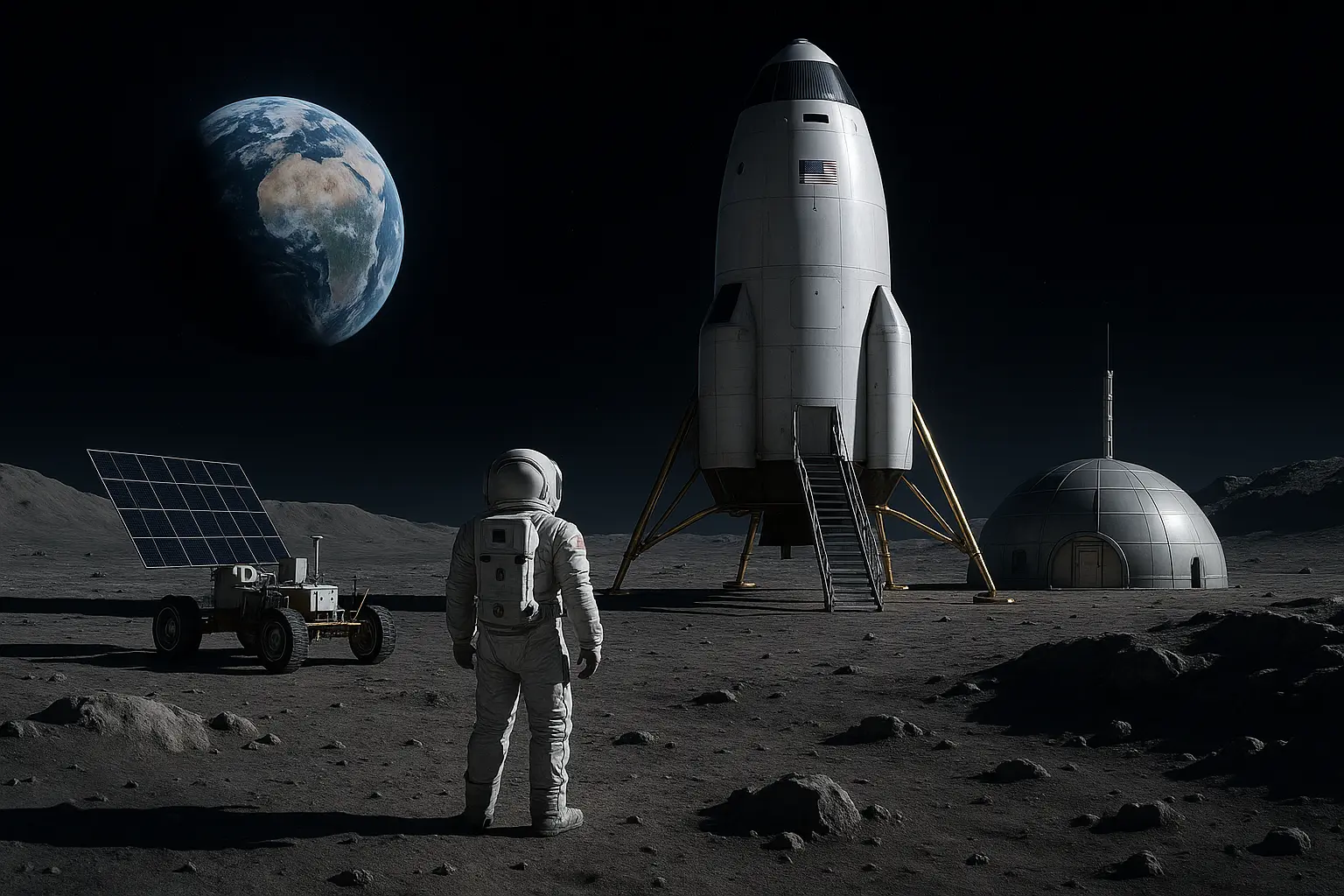Introduction
The Moon, Earth’s closest celestial neighbor, has captivated humanity for centuries. From the first human landing in 1969 to today’s advanced space missions, our fascination with the lunar surface has only grown. Now, with NASA’s Artemis Program, we stand on the brink of a new era—one where Moon colonization is not just science fiction, but an achievable reality. This ambitious initiative aims to land the first woman and the next man on the Moon, establish a sustainable human presence, and serve as a launchpad for deeper space exploration.
1. Overview of the Artemis Program
The Artemis Program, named after the Greek goddess of the Moon and twin sister of Apollo, is NASA’s flagship effort for the 21st century. Announced in 2017, Artemis seeks to build upon the legacy of the Apollo missions while embracing modern technology, sustainability, and international collaboration.
Key Milestones of Artemis:
- Artemis I (2022) – An uncrewed test flight of the Space Launch System (SLS) and Orion spacecraft.
- Artemis II (Planned) – The first crewed mission to orbit the Moon in the 21st century.
- Artemis III (Planned) – The mission that will return humans to the Moon’s surface.
- Artemis IV and beyond – Establishing a sustainable lunar base camp and the Lunar Gateway station in lunar orbit.
2. Objectives of Artemis
NASA’s Artemis Program is not just about landing astronauts; it’s about creating a permanent human foothold on the Moon.
Primary Goals:
- Sustainable Lunar Habitation – Develop a base camp capable of supporting astronauts for extended stays.
- Resource Utilization – Mine lunar water ice for drinking water, oxygen production, and hydrogen fuel.
- Gateway Development – Build an orbital platform to serve as a staging point for lunar and Martian missions.
- International Partnerships – Collaborate with space agencies such as ESA, JAXA, and CSA.
- Commercial Involvement – Encourage private companies like SpaceX and Blue Origin to participate.
3. Technological Innovations Driving Moon Colonization
Succeeding in Moon colonization requires cutting-edge technology across multiple domains.
a. Spacecraft and Propulsion
The Space Launch System (SLS) is the most powerful rocket ever built by NASA, designed to carry crew and cargo beyond Earth’s orbit. The Orion spacecraft provides life support, navigation, and re-entry capability.
b. Lunar Habitats
Advanced habitat modules will be equipped with radiation shielding, temperature control, and recyclable life support systems to sustain astronauts for months.
c. Resource Extraction
Water ice found in permanently shadowed lunar craters can be processed into oxygen and hydrogen fuel, reducing dependence on Earth for supplies.
d. Power Generation
Solar farms will power habitats, scientific instruments, and industrial operations on the Moon’s surface.
e. Transportation
Lunar rovers and autonomous cargo transporters will enable large-scale material movement and exploration.
4. Scientific Opportunities on the Moon
The Moon offers a wealth of scientific research possibilities:
- Geological Studies – Uncovering the history of the early Solar System.
- Astrophysics – Using the Moon’s far side as a radio-quiet zone for deep space observation.
- Biological Research – Studying the effects of low gravity on human health over extended periods.
- Technology Testing – Proving life-support and manufacturing systems for Mars and beyond.
5. Economic Potential of Moon Colonization
The Moon is more than a scientific frontier—it’s an economic opportunity.
- Mining Resources – Helium-3, rare earth metals, and platinum group elements could support Earth’s industries.
- Space Tourism – Private companies could offer lunar surface tours for wealthy adventurers.
- Energy Production – Potential for lunar-based solar power beamed back to Earth.
- Gateway Economy – Servicing spacecraft traveling to Mars and other destinations.
6. International and Commercial Collaboration
Moon colonization will require global cooperation and private sector involvement.
- International Agreements – The Artemis Accords establish guidelines for peaceful space exploration.
- Private Contractors – SpaceX’s Starship and Blue Origin’s lunar landers are integral to the program.
- Shared Infrastructure – Countries and companies can contribute modules, rovers, or research facilities.
7. Challenges of Moon Colonization
Despite its promise, lunar colonization comes with major challenges:
- Extreme Temperatures – Ranging from -173°C at night to 127°C during the day.
- Radiation Exposure – No magnetic field means high exposure to solar and cosmic radiation.
- Micrometeorites – Small but fast-moving impacts could damage habitats and equipment.
- Psychological Factors – Isolation and limited communication with Earth can affect mental health.
- Logistics – Transporting materials and equipment to the Moon remains costly.
8. Artemis and the Road to Mars
NASA envisions the Moon as a stepping stone to Mars. The technology and infrastructure developed under Artemis will be tested on the Moon before being deployed for the first human missions to the Red Planet.
Conclusion
The Artemis Program is more than a return to the Moon—it’s the foundation for a new space economy, a hub for scientific discovery, and a launchpad for humanity’s journey into the cosmos. By overcoming technical, environmental, and political challenges, Artemis could mark the beginning of a permanent human presence beyond Earth.
In the decades ahead, the Moon may no longer be a distant light in the night sky, but a thriving human outpost—an enduring testament to our curiosity, innovation, and ambition.

Шарики с гелием — отличный способ украсить любое событие. Они добавляют радости и веселья, создавая уникальную атмосферу.
[url=https://shariki-s-geliem.ru/]Шарики с гелием купить[/url] для вашего праздника!
Выбор гелиевых шариков очень разнообразен. Вы можете выбрать шарики с рисунком или однотонные, в зависимости от темы вашего события.
Купить такие шарики можно в специализированных магазинах или заказать онлайн. Заказ через интернет может быть намного удобнее и быстрее.
Важно учитывать меры безопасности при работе с гелиевым наполнителем. Следите за тем, чтобы шарики не оказывались вблизи воды и всегда были под контролем.